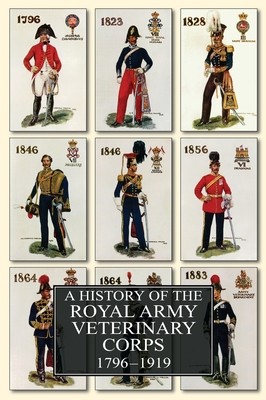
- We will send in 10–14 business days.
- Author: Frederick Smith
- Publisher: Naval & Military Press
- ISBN-10: 178331768X
- ISBN-13: 9781783317684
- Format: 17.8 x 25.4 x 2.7 cm, kieti viršeliai
- Language: English
- SAVE -10% with code: EXTRA
A History of the Royal Army Veterinary Corps 1796-1919 (e-book) (used book) | bookbook.eu
Reviews
Description
A fine unit history, from it's foundation in 1796 to the end of The First World War, complete with very good colour uniform plates, rolls of officers present in Peninsula, Waterloo & numerous other campaigns.
During the First World War, the AVC tripled its officers, and the number of other ranks grew forty-fold. By 1918, nearly half of all veterinary surgeons in Britain were serving in the corps. Engaged on the Western Front, at Gallipoli, Salonika, Mesopotamia and Palestine, it treated sick and wounded cavalry, transport and artillery animals. It also diversified, dealing with horses that had been gassed, setting up four farriery schools, and even treating camels in the Middle East.
Following the Armistice in 1918, it was granted the 'Royal' prefix in recognition of its service.
EXTRA 10 % discount with code: EXTRA
The promotion ends in 21d.07:15:47
The discount code is valid when purchasing from 10 €. Discounts do not stack.
- Author: Frederick Smith
- Publisher: Naval & Military Press
- ISBN-10: 178331768X
- ISBN-13: 9781783317684
- Format: 17.8 x 25.4 x 2.7 cm, kieti viršeliai
- Language: English English
A fine unit history, from it's foundation in 1796 to the end of The First World War, complete with very good colour uniform plates, rolls of officers present in Peninsula, Waterloo & numerous other campaigns.
During the First World War, the AVC tripled its officers, and the number of other ranks grew forty-fold. By 1918, nearly half of all veterinary surgeons in Britain were serving in the corps. Engaged on the Western Front, at Gallipoli, Salonika, Mesopotamia and Palestine, it treated sick and wounded cavalry, transport and artillery animals. It also diversified, dealing with horses that had been gassed, setting up four farriery schools, and even treating camels in the Middle East.
Following the Armistice in 1918, it was granted the 'Royal' prefix in recognition of its service.


Reviews